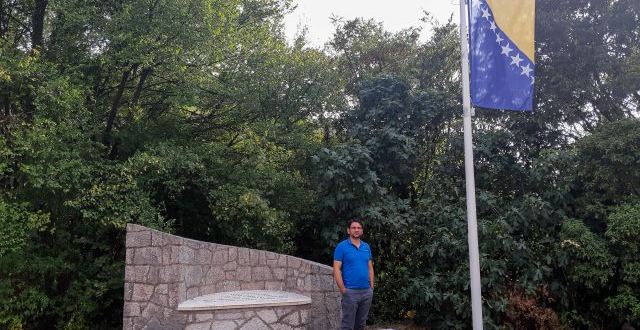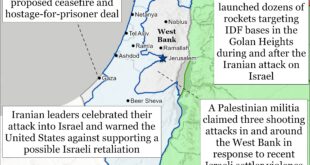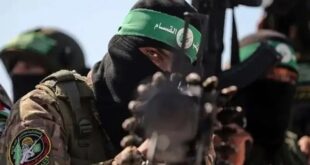In the second in a three-part series, survivors of the 1992 Uborak and Sutina massacres speak about their long campaign for justice and the potential role of the Hague Tribunal’s archives in identifying suspects is examined.
Adnin Hasic speaks very calmly. When asked about the work of the Association of Families of Victims Killed in Uborak and Sutina, his answers are articulate and precise. Once he starts talking, Hasic, the president of the association, unrolls a thread of information, details, dates, names, locations and numbers related to what should have been the case of Uborak and Sutina, if the Bosnian state prosecutor’s office had ever opened one
A total of 114 civilians were executed at a garbage dump in Uborak and near a cemetery in Sutina on June 13, 1992. No one has yet ever been convicted of the massacres. Serbian Radical Party leader Vojislav Seselj was cleared of any responsibility for the killings by the International Criminal Tribunal for the Former Yugoslavia, ICTY in The Hague.
Hasic’s parents were both killed at the garbage dump in Uborak. “We were kids at that time, we couldn’t do anything and we didn’t know or understand anything,” he said.
While the judicial institutions supposedly responsible for dealing with such crimes are doing so little that their progress is seemingly non-existent, war crime survivors in Bosnia and Herzegovina have become experts on their own cases.
As Hasic continues explaining his association’s activities, he mentions a visit to the Srebrenica Memorial Centre, where he met its director Emir Suljagic and the Mothers of Srebrenica association led by Munira Subasic. There is a sense of commonality between these two groups of survivors as they have mainly led the fight for justice for war crimes in which they lost relatives, husbands or parents. “What they did for Srebrenica, we do for Uborak and Sutina,” said Hasic.
Immediately after the war, the Women of Srebrenica and the Mothers of Srebrenica became expert-activists pushing for action. When exhumations were not progressing, Women of Srebrenica leader Hajra Catic and others organised collective expeditions into the woodlands surrounding Srebrenica to collect bones and victims’ personal possessions.
The Bosnian government initially didn’t want to memorialise the 1995 genocide in the Srebrenica municipality, which is located in the Serb-dominated Republika Srpska entity, but instead pushed for a monument to be installed in Kladanj, across the entity boundary line in the Bosniak- and Croat-dominated Federation entity.
It was Catic, again, along with Sabaheta Fejzic, Hasan Nuhanovic and many others, who organised the very first commemoration in 1999 in the former UN peacekeepers’ base at Potocari near Srebrenica, where civilians took refuge on July 11, 1995 when the town was taken by the Bosnian Serb Army led by Ratko Mladic.. They led the successful campaign to memorialise the genocide where it took place; the Srebrenica Memorial Centre and victims’ cemetery are now located in Potocari.
Adnin Hasic has an encyclopedic knowledge of the crimes committed in Uborak and Sutina. “If you had listened to my declarations from 15 years ago, you would see that I was missing information, that there are things I was not aware of. I progressed a lot, learned a lot,” he said. “And as long as I am alive, I will keep on working on memorialisation and justice.”
As Hasic enumerates the fastidious steps taken during 17 years of work since the creation of the association in 2005, it’s clear that process of seeking justice requires tremendous patience and tenacity.
“We must do everything so we remember the victims of Uborak and Sutina. This is the first and biggest war crime in Herzegovina, the two first mass graves exhumed in Bosnia and Herzegovina. They were exhumed immediately during the war… The other mass graves in the country were found and exhumed after the war,” he explained.
There are many specific aspects to the massacres in Uborak and Sutina. Hasic stresses the importance of the fact that the victims were from different ethnic backgrounds – 85 Bosniaks and 29 Croats. “This is unique in the country,” he said. The 114 civilian victims were taken from various villages north of Mostar, and from the Carina and Zalik neighbourhoods of the city.
Although the mass graves have been exhumed, the victims identified and testimonies collected, no domestic case has ever been launched in Bosnia and Herzegovina to prosecute anyone for the massacres. Thirty years on, despite the names of suspects being known – 12 of whom have died since 1992 – the victims’ families are still waiting for a judicial epilogue.
“A case was established in March 1993 by the Military Tribunal of the HVO [Croatian Defence Council, the Bosnian Croat wartime force] here in Mostar but very little happened,” Hasic said.
But he is confident that justice will eventually prevail. “We know there is a general problem with justice in Bosnia and Herzegovina but I am a legalist and I want to believe in my institutions,” he said.
Recent events have given him a reason to hope for progress. “At the end of last year, nine former members of the VRS [Bosnian Serb Army] were arrested, one was still on active service in the Bosnian armed forces and one of them was Damir Miskin,” he explained.
In January 2022, the state prosecution issued a war crimes indictment for Damir Miskin, who was born in Mostar in 1968. Miskin, who was a member of the 5th Battalion of the Bosnian Serb Army’s Nevesinje Brigade, was charged with rape.
He admitted his involvement in the crime and agreed a plea bargain with the Court of Bosnia and Herzegovina. The prosecutor’s office consulted with the family of the victim, who is no longer alive, and they agreed to the deal. Miskin was given a four-year sentence that he is currently serving in home detention.
Another suspect in the Uborak and Sutina massacres, Mladen Kandic, a reservist member of the Mostar Militia, a Yugoslav-era law enforcement agency, was indicted in February alongside eight other members of the Bosnian Serb Army for crimes committed in the Nevesinje area, not far from Mostar.
The indictment accuses them of crimes against humanity, claiming that they were responsible for the death of over 100 people from the Nevesinje area, including women and children, not long after the killings in Uborak and Sutina.
“We hope the court manages to bring Uborak and Sutina into this case in Nevesinje which took place a little less than two weeks afterwards in June 1992,” Hasic said.
But there is a race against time to achieve justice as ageing suspects die and escape prosecution. Survivors and victims’ relatives have also died without seeing justice done. Massacre survivor Redzep Karisik, who testified at the ICTY in Serbian Radical Party leader Vojislav Seselj’s trial, died in December 2021 after 30 years of struggling for justice.
Karisik’s testimony in The Hague in the Seselj case revealed the difficulties that witnesses faced in appearing at the Tribunal with no preparation and barely any support. In one interview afterwards, Karisik said: “From one day to another you find yourself in court. They call you, they say you must go and that’s it. No one explains anything.” His confrontation with Seselj in court was harsh and his exchanges with the judges were difficult, with Karisik often being reminded that he lacked focus and precision.
Another massacre survivor who testified at Seselj’s trial, Fahrudin Bilic, faced the same difficulties as Karisik at the court in terms of focus and precision. A decorator from the Zalik neighbourhood of Mostar, Bilic was taken to the administration facilities at the Sutina cemetery on June 13, 1992. He was detained in the Zalik nuclear shelter by what he described as a mixture of Seselj’s men and Yugoslav People’s Army soldiers.
Bilic’s testimony described life in the shelter and relations with some local Serbs, members of the Serbian Radical Party, who turned from neighbours to torturers. It allowed an understanding of what happened to the civilians taken to the Sutina cemetery, the conditions in detention and how the executions were carried out. Bilic ultimately escaped thanks to a local Serb he called ‘Boro’, who he said lived right behind the cemetery.
Despite being the largest war crime committed in Herzegovina, the killings in Uborak and Sutina are not a major topic in the ICTY’s archives. The vast majority of the testimonies about the massacres are connected to the Seselj case. They are essentially directed at proving the link between members of the Serbian Radical Party, members of Seselj’s militia and the massacres.
However, the testimonies also provide details that complete the picture of Mostar at war and of how civilians survived. In addition, they offer a trail of names of people who witnesses say were involved in the crimes committed at Uborak and Sutina. Many were local members of the Serb Democratic Party, founded by Radovan Karadzic, who allegedly participated in arrests, torture and executions along with Seselj’s men. It appears that these people have never been questioned or prosecuted.
This means that the ICTY archives could be used as a powerful tool against impunity. They also, as Bilic’s testimony shows, offer examples of solidarity in times of violence.
The archives show the multiplicity of actors involved in the massacres in Uborak and Sutina and the full context in which they took place, as well as revealing various aspect of the war in Mostar in 1992 that have been largely invisible. They provide a unique resource for any researcher who wants to study these crimes and give a broader and much precise picture of what happened in Herzegovina in 1992, a chapter of the war that has been generally overlooked.
 Eurasia Press & News
Eurasia Press & News




